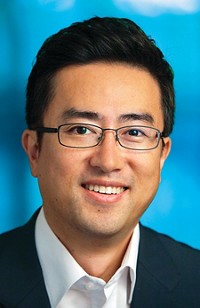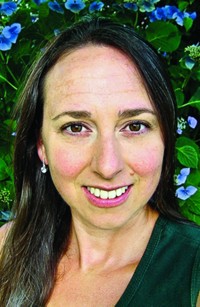Advertisement
Grab your lab coat. Let's get started
Welcome!
Welcome!
Create an account below to get 6 C&EN articles per month, receive newsletters and more - all free.
It seems this is your first time logging in online. Please enter the following information to continue.
As an ACS member you automatically get access to this site. All we need is few more details to create your reading experience.
Not you? Sign in with a different account.
Not you? Sign in with a different account.
ERROR 1
ERROR 1
ERROR 2
ERROR 2
ERROR 2
ERROR 2
ERROR 2
Password and Confirm password must match.
If you have an ACS member number, please enter it here so we can link this account to your membership. (optional)
ERROR 2
ACS values your privacy. By submitting your information, you are gaining access to C&EN and subscribing to our weekly newsletter. We use the information you provide to make your reading experience better, and we will never sell your data to third party members.
People
Pittcon Awards 2008
Researchers receive honors for achievements in analytical chemistry and spectroscopy
by Linda Wang
March 24, 2008
| A version of this story appeared in
Volume 86, Issue 12
COVER STORY
Pittcon Awards 2008
DURING PITTCON 2008 this month in New Orleans, 11 scientists were honored for outstanding contributions to their fields.
The Spectroscopy Society of Pittsburgh presented the 2008 Pittsburgh Spectroscopy Award to Sanford A. Asher, a Distinguished Professor of Chemistry at the University of Pittsburgh and scientific founder of the start-up company Glucose Sensing Technologies. He was honored for his pioneering work developing UV-Raman spectroscopy and demonstrating its utility in the fields of materials science and analytical, physical, and biophysical chemistry.
Asher and his group were the first to build tunable UV-Raman instruments in the early 1980s. They applied UV-Raman spectroscopy to the study of small and large molecules, then to studies of biological structure and dynamics. His research provided the first experimental insight into α-helix melting and refolding. His UV-Raman spectral-structure correlations have made the technique a powerful probe of secondary structure in dilute solution. In addition, Asher and his group pioneered development of photonic crystal materials and devices for optics and spectroscopy.
Asher received a B.A. in chemistry from the University of Missouri, St. Louis, in 1971 and a Ph.D. in chemistry from the University of California, Berkeley, in 1977.
The Society for Analytical Chemists of Pittsburgh presented the 2008 Pittsburgh Analytical Chemistry Award to Milton L. Lee for his research in capillary separations and mass spectrometry.
Lee, the H. Tracy Hall Professor of Analytical Chemistry at Brigham Young University, received a B.A. in chemistry from the University of Utah in 1971 and a Ph.D. in analytical chemistry from Indiana University in 1975.
He cofounded Lee Scientific in 1984 to manufacture and market supercritical fluid chromatography instrumentation. In 1991, he cofounded Sensar Corp. to do the same for unique time-of-flight mass spectrometry instrumentation.
Geraldine L. Richmond, Richard M. & Patricia H. Noyes Professor of Chemistry at the University of Oregon, received the 2008 Bomem-Michelson Award from the Coblentz Society.
Richmond has been conducting research in the area of surface science and laser spectroscopy for nearly three decades. She is widely recognized for making significant contributions that have furthered understanding of the structure and reactivity of complex surfaces and interfaces.
She received a B.S. in chemistry from Kansas State University in 1975 and a Ph.D. in chemistry from UC Berkeley in 1980.
Adam T. Woolley, associate professor of chemistry at Brigham Young University, received the 2008 Analytical Chemistry Award for Young Investigators in Separation Science.
Woolley and his group are applying microfabrication methods to produce microfluidic systems for bioanalysis. They have developed various microdevice bonding techniques to facilitate separations in polymer microchips and enable the interfacing of hydrogels with microfluidic channels. These microdevices have been applied in rapid capillary electrophoresis separations and in the emerging technique of electric field gradient focusing for protein analysis. His group also carries out materials research using biological molecules as templates for assembling structures with nanometer-scale dimensions.
Woolley received a B.S. in chemistry from Brigham Young in 1992 and a Ph.D. in chemistry from UC Berkeley in 1997.
Héctor D. Abruña, the Emile M. Chamot Professor of Chemistry at Cornell University, accepted the 2008 Charles N. Reilley Award in Electroanalytical Chemistry from the Society for Electroanalytical Chemistry.
Abruña pioneered the use of techniques such as surface extended X-ray absorption fine structure spectroscopy, X-ray standing waves, and surface diffraction for the in situ study of electrochemical interfaces. In particular, his group has used these techniques to monitor the underpotential deposition of metal monolayers onto single-crystal electrode surfaces.
Abruña received B.S. and M.S. degrees from Rensselaer Polytechnic Institute in 1975 and 1976, respectively, and a Ph.D. degree from the University of North Carolina, Chapel Hill, in 1980.
The Society for Electroanalytical Chemistry presented its 2008 Young Investigator Award to Shelley D. Minteer, an associate professor of chemistry at St. Louis University.
Her research has focused on developing enzyme immobilization membranes that can be used to increase the stability of biosensor and biofuel cell electrodes and the incorporation of both direct and mediated bioelectrocatalysis into anodes and cathodes. In 2003, she cofounded Akermin to commercialize this technology.
Minteer received a B.S. in chemistry from Western Illinois University in 1995 and a Ph.D. in analytical chemistry from the University of Iowa in 2000.
John G. Dorsey, Katherine Blood Hoffman Professor of Chemistry at Florida State University, received the 2008 Dal Nogare Award. He was given the honor by the Chromatography Forum of Delaware Valley for his outstanding research and teaching accomplishments in liquid chromatography.
Dorsey's research interests are fundamental liquid chromatography, separation science, and old Bordeaux wines. His best-known work, the development of the Foley-Dorsey equation in 1983, is the most accurate manual method for the determination of column efficiency. He has concentrated on the use of micelles as eluent modifiers for reverse-phase high-performance liquid chromatography and has investigated the technique's retention process with solvatochromic probes.
He received a Ph.D. in analytical chemistry from the University of Cincinnati in 1979.
Neil L. Kelleher, a professor of chemistry at the University of Illinois, Urbana-Champaign, received the 2008 Pittsburgh Conference Achievement Award from the Pittsburgh Conference and the Society for Analytical Chemists of Pittsburgh.
His research interests are in mass spectrometry-based enzymology and "top down" proteomics using intact proteins for efficient detection of posttranslational modifications made to proteins.
Kelleher received a B.S. in chemistry from Pacific Lutheran University in 1992 and a Ph.D. in chemistry from Cornell University in 1997.
The Pittsburgh Conference and the Chemical Heritage Foundation presented the 2008 Pittcon Heritage Award to Leroy E. Hood, president of the Institute for Systems Biology, in Seattle.
The award recognizes individuals whose entrepreneurial careers have shaped the instrumentation community, inspired achievement, promoted public understanding of the modern instrumentation sciences, and highlighted the role of analytical chemistry in world economies.
A pioneer in the field of systems biology, Hood is the inventor of devices such as the protein sequencer, the protein synthesizer, the DNA sequencer, and the DNA synthesizer.
Hood earned an M.D. from Johns Hopkins University in 1964 and a Ph.D. in biochemistry from California Institute of Technology in 1968.
Milos V. Novotny received the 2008 Ralph N. Adams Award in Bioanalytical Chemistry from the Pittsburgh Conference and the Friends of Ralph N. Adams. Novotny is a Distinguished Professor of Chemistry and the Lilly Chemistry Alumni Chair in the Indiana University, Bloomington, chemistry department and an adjunct professor of medicine at the university's School of Medicine.
Novotny's research interests include separation science and structural analysis of biological molecules, proteomics and glycobiology, and chemical communication in mammals. He has played a major role in developing modern chromatographic and electrophoretic methods of analysis.
He received a B.S. from the University of Brno, Czechoslovakia, where he also earned a Ph.D. in biochemistry.
Rina K. Dukor, president of BioTools, received the 2008 Williams-Wright Award from the Coblentz Society.
BioTools, the company Dukor cofounded in 2000, is a leader in providing instrumentation and services to pharmaceutical and biotechnology firms in several niche markets. Her research interests are in applications of vibrational spectroscopy to pharmaceutical problems.
Dukor received a Ph.D. in physical chemistry from the University of Illinois, Chicago, in 1991.















Join the conversation
Contact the reporter
Submit a Letter to the Editor for publication
Engage with us on Twitter